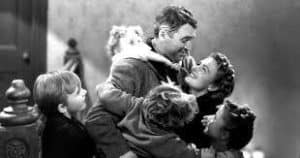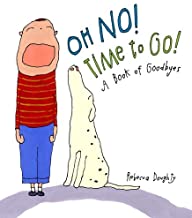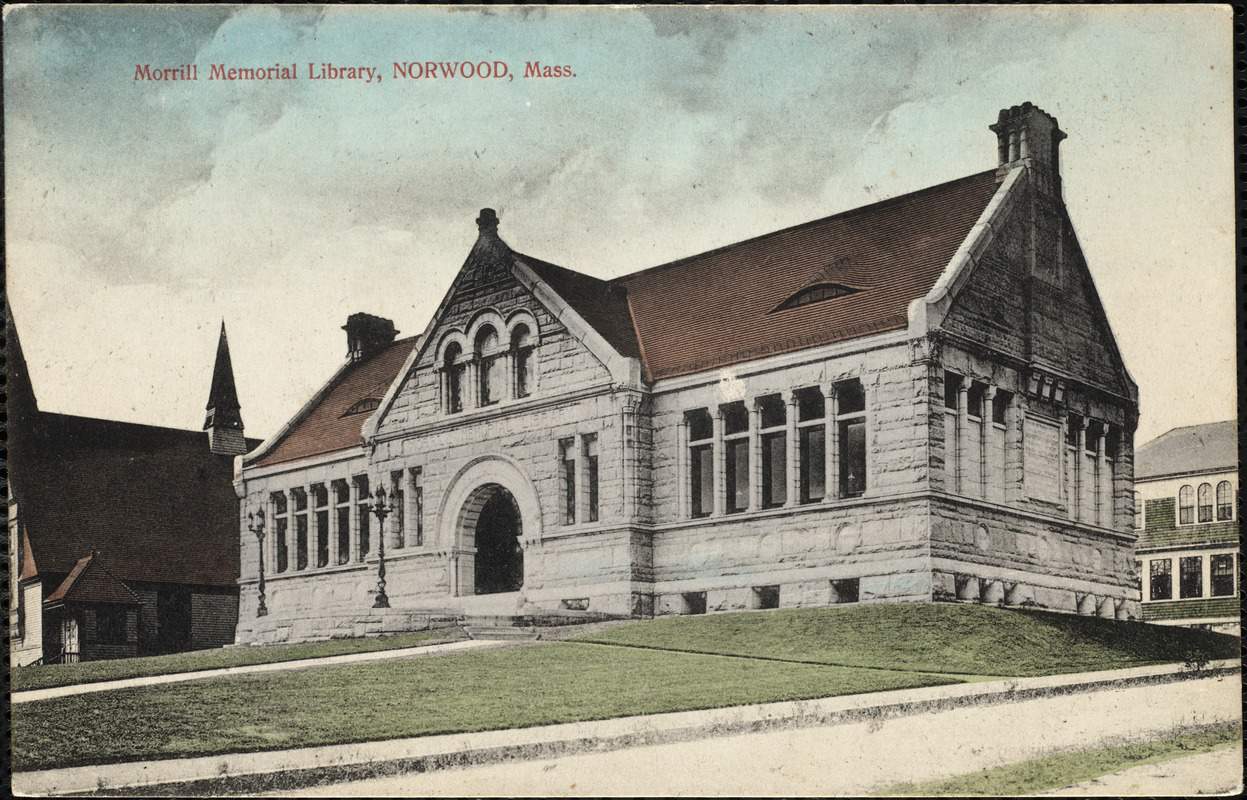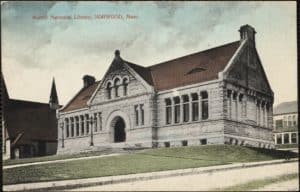Tag Archives:from the library

4
JanMy Summer of Skating
 When quarantine first started in March, I was one of those people who immediately felt a sense of loss at having to be stuck at home 24/7. Needless to say, I got cabin fever pretty quickly. So, like many people across the US, I went in search of an activity that would keep me moving, get me outside, and would allow me to remain socially distanced from others. As bike sales skyrocketed and other sporting equipment was flying off store shelves and Amazon shopping carts, I quickly found my new niche: roller skating.
When quarantine first started in March, I was one of those people who immediately felt a sense of loss at having to be stuck at home 24/7. Needless to say, I got cabin fever pretty quickly. So, like many people across the US, I went in search of an activity that would keep me moving, get me outside, and would allow me to remain socially distanced from others. As bike sales skyrocketed and other sporting equipment was flying off store shelves and Amazon shopping carts, I quickly found my new niche: roller skating.
I had roller skated in the past at birthday parties in roller rinks, and had used roller blades a few times on my street when I was little. “How hard could it be?” I thought as I unboxed my brand-new white and green skates that I had bought from Kohl’s. Naively, I packed up my roller skates and new padding, dragged my mother along to Byrd Park, and envisioned myself gracefully zipping along the sidewalks as soon as I stepped onto the pavement in my new skates.
Oh how wrong I was.
My first time using my new roller skates was like a scene out of “Bambi,” as I wobbled precariously along the sidewalk, clutching onto my mother’s arm for dear life, trying not to wipe out in front of everyone else looking on at the park that day. As I shuffled back to the safety of a park bench to untie those wretched skates, I realized that maybe roller skating was not going to be as easy as I had envisioned. “I’ll get the hang of it the next time I skate, though!” I thought.
Oh how wrong I was.
It would take me at least three more times of shuffling and tripping around the parking lot at Norwood Central, holding onto my mother’s arm, before I decided to do some research to see if there was something wrong with the skates, or if I was truly just the world’s worst skater. A quick Google search informed me that there was a lot that I didn’t know about roller skates, but which did confirm that maybe it was the skate’s fault, and not my own lack of talent. It turns out that you can’t just buy any skate and then expect to zip around like you were on the set of Whip It. Roller skates come with different wheels, indoor and outdoor ones. Indoor wheels are more suited for flat, smooth surfaces, like the flooring of a roller rink, while outdoor wheels are larger and softer, to be able to absorb the rougher shock of uneven surfaces like sidewalks and parking lots. I also learned that one of the most important things that you should check your skate wheels for is that they actually spin. I had scoffed this advice at first, but then realized as I tested out my wheels that they indeed did not spin freely as I had expected, which explained why I kept tripping over myself when I went out skating, and couldn’t actually stride or glide. After a quick tutorial on how to use my dad’s socket wrench, I loosened up the wheels and could now roll them across the ground and see them actually travel.
However, as I did more and more research on indoor vs. outdoor skates, wheels, boot height, and more, I realized that at this point, I just needed a better pair of skates that could actually withstand the outdoor conditions of a street or parking lot. Unfortunately, proper roller skates had become just as rare to purchase as bicycles, with brands like Moxie, Sure-Grip, and Impala sharing on their website how they were completely sold out of stock, and I was starting to lose hope that I would ever become a roller girl before the summer ended. Miraculously, the skate brand Impala announced a restock just as I was starting to lose hope, and in a few weeks, I was the proud owner of a pair of bubble-gum pink roller skates.
My next trip to the parking lot was a lot better with the Impalas. Instead of tripping over my skates and wobbling around like a baby deer testing out its legs, I could now start to stride and glide and feel the wind blowing through my hair as I picked up speed. And then, the proud moment came when, like a baby bird leaving the nest, I slowly let go of my mother’s arm that I had clenched in my hand in a death-grip, and skated on my own. I was overjoyed. I was finally skating!
For those who are thinking of purchasing roller skates for the first time, I have a few words of advice before you do so. First, do your research. There’s a whole world of skating information out there, and lots of skating guides to help you decide what to look for in a roller skate, and which brand is the best for your skating needs. Watch some YouTube tutorials, or even read a book! One of my favorite books is Roller Girl by Victoria Jamieson, a middle-grade graphic novel about a girl who joins roller derby camp, and realizes that skating isn’t as easy as it sounds. Reading that book and seeing someone in a similar skating situation to mine really helped me to understand how skating skills don’t occur overnight, and how much work needs to go in before you become a proficient skater. Second, invest in padding and a helmet. Falling on your skates will happen, and buying some good padding and a sturdy helmet will protect you from seriously injuring yourself. And finally, don’t be discouraged! You may fall and feel like you’ll never get the hang of it, but I promise you, there will come that moment when you lace on your skates, stand up, and glide off without tripping or falling.
Dina Delic is the Assistant Children’s Librarian at the Morrill Memorial Library in Norwood, MA. Look for her article in the December 31, 2000 issue of the Transcript and Bulletin.

24
DecMerry Christmas Eve
 Growing up, I celebrated typical American Christmases in many ways. We put up a colorful tree with lights and garland, hung stockings over the fireplace, and put out cookies for Santa and carrots for his reindeer. Fortunately, I never ended up on the naughty list, so Santa showed up every year in the middle of the night leaving an abundance of gifts for me to find in the morning. Sure, being raised Christian I tried to keep in mind the “true meaning of Christmas,” but as a kid I was more excited about the toys and the annual claymation specials on tv.
Growing up, I celebrated typical American Christmases in many ways. We put up a colorful tree with lights and garland, hung stockings over the fireplace, and put out cookies for Santa and carrots for his reindeer. Fortunately, I never ended up on the naughty list, so Santa showed up every year in the middle of the night leaving an abundance of gifts for me to find in the morning. Sure, being raised Christian I tried to keep in mind the “true meaning of Christmas,” but as a kid I was more excited about the toys and the annual claymation specials on tv.
In other respects, as the only Lithuanian-American member of my peer group, I had quite a unique Christmas. December 25th may have been an exciting day because of the goodies under the tree, but my family really celebrated on Christmas Eve. The holiday and corresponding meal called Kūčios began after dark and my extended family gathered at the Cape Cod home of my grandmother, uncle and aunt for what was my favorite night of the year.
The elders spoke Lithuanian or spoke to the kids in broken English, while the younger generations and their non-Lithuanian guests only spoke English. I loved hearing the language I couldn’t understand and seeing the distinctive traditional artwork adorning the walls and shelves. The Christmas tree included uniquely Lithuanian ornaments made of straw. Strangely enough, I especially enjoyed the meal, which wasn’t the case for many of the younger attendees; I was always an adventurous eater.
For the first course my aunt brought out beet and mushroom soup. My grandmother (močiutė) said grace and addressed the family in her native tongue, often getting a little choked up, and then we “broke bread.” Everyone got a thin white wafer (plotkelės, or dievo pyragai), like the Eucharist, but bigger and rectangular, with a decorative Christmas image embossed on it. Each person had to greet every other person, and break off a piece of their wafer while wishing them well, usually with a “Merry Christmas” and kiss on the cheek. After making the rounds, you dropped all of the little wafer pieces into the soup like croutons and commenced with feasting.
The Kūčios meatless meal traditionally featured twelve fish dishes, representing the twelve apostles (I have also heard thirteen, for the apostles plus Jesus). I don’t think my family counted the dishes, but we did commit to seafood and side dishes only, including many items I only encountered once a year. I remember smoked eel and pickled herring, smelts and vinegretas, a potato salad with beets. The only dish I never had the courage to try involved some kind of fish suspended in clear gelatin. Over the years with more fussy children in attendance and fewer diners from “the old country” the meal became more Americanized, allowing for cocktail shrimp, smoked salmon, and miniature tuna fish sandwiches. I vaguely remember poppy milk and sour cranberry pudding (kisielius), and long for močiutė’s famous Napoleon Torte, which seemed like it had a hundred layers.
Indeed, many traditions faded over the years and generations. According to The Christmas Encyclopedia, anyone who did not try each dish would risk death in the next year, and food was to remain left out overnight for the spirits of the deceased. I had never heard these grim superstitions and we also never set an empty place with a candle for those who passed away during the year, but we do continue to place a bit of hay under the tablecloth symbolizing the manger. The encyclopedia also claims that Kūčios involves no alcoholic beverages, but I distinctly remember bottles of vodka for the grownups at the dinner table. Other seasonal and likely homemade spirits included Krupnikas, a spiced honey liqueur.
The evening ended with midnight mass, not at a Lithuanian church but in my hometown at the fully American church nearby. When I started working at the library I discovered that colleagues of mine had been parishioners at a Lithuanian church right here in Norwood. I learned a bit about Saint George Catholic Church and the town’s Lithuanian population from the book Lithuanians of Norwood, Massachusetts: A Social Portrait in a Multi-Ethnic Town and a documentary entitled St. George: A Community History.
The church was founded in 1915 by Lithuanian immigrants and held masses in English and Lithuanian, in addition to a few other languages spoken by local ethnic groups. According to the church’s Six-Year Report: 1982-1988, it hosted events celebrating St. Casmir and Lithuanian independence, and held Baltic holocaust observances. It served as a gathering place for the Knights of Lithuania, and offered secular events such as polka parties. For 21 years William Wolkovich-Valkavičius, affectionately known as Father Bill, oversaw the parishioners as Pastor, until the church closed in 2004. Unfortunately, Archbishop Seán O’Malley required St. George’s to shutter its doors when child sexual abuse cases resulted in the sale of real estate to pay for claims against the Archdiocese of Boston.
Eventually St. George’s became condominiums, and Father Bill passed away, as did the elders of my own family. Unlike my siblings, cousins and I, my niece and nephews and their children are only a fraction Lithuanian, and we depart from the traditions I fondly remember as time goes on. Of course we form new traditions, albeit more Americanized, but I will always treasure the memories of our Lithuanian Christmas Eves.
I wish everyone happy holidays, a merry Christmas, and linksmų Kalėdų.
Lydia Sampson is the Assistant Director at the Morrill Memorial Library in Norwood, MA. Look for her article in the December 23, 2020 issue of the Transcript and Bulletin.

18
DecIt’s a Pretty Wonderful Life
 After postponing my annual physical twice, then forgetting to reschedule it once I got the green light, the day of reckoning finally arrived.
After postponing my annual physical twice, then forgetting to reschedule it once I got the green light, the day of reckoning finally arrived.
The news wasn’t great. Not only have I shrunk half an inch, I have borderline high blood pressure and high cholesterol. Plus the hip flexor tendonitis from a few years back has returned with a vengeance. I knew I should have kept up those exercises. Old age, as they say, is not for sissies.
The first issue was easily addressed. I wore heels to work the next day and a lovely coworker told me I looked tall. Everything’s relative, I guess. Moving on to the more troublesome hypertension…
Among its hundreds of Library of Things holdings, the Morrill Memorial Library lends out a bona fide blood pressure monitor. It’s portable, painless, and easy to use. My primary care physician suggested I take my blood pressure twice a week and report back in four months. I’ve also been advised to follow a low-salt diet and cut back on nuts, red wine, crackers, and charcuterie. (At least there was no mention of giving up cured meats and cheeses!)
Continuing my preventive health kick I scheduled a colonoscopy, got a flu shot, and inquired about my second pneumonia vaccine (I have to be 65) and the shingles shot (not available at my doctor’s office). My hip problem is presenting more of a challenge. Not only am I occasionally caught limping, but sometimes the throbbing is so intense I have trouble falling asleep. My trusty PCP had one word of advice: yoga. Specifically, “pigeon is your friend.”
I checked out as many books and videos on yoga as I could carry and prepared to reacquaint myself with Downward Dog, Warrior One, and Happy Baby. But where to begin? There was Yoga for Anxiety by Mary NurrieStearns, Yoga for Arthritis by Loren Fishman, Yoga for Women at Midlife and Beyond (I love a good euphemism) by Patricia Shapiro, and the dubiously titled DVD, Yoga for Inflexible People. Were they talking strictly physically, or…? I was pondering the double entendre when all thoughts of pigeon flew out the window with the latest diagnosis. My husband Brad and I, along with my daughter and son-in-law, had all contracted COVID-19.
You never think it’s going to happen to you–until it does. We don’t fly, dine indoors, frequent hair salons, venture out without a mask, or attend parties, political rallies, or swearing-in ceremonies in the Rose Garden. But still.
Less than 24 hours after my close encounter with the cotton swab I was on the horn with Paul from the COVID Tracing Collaborative (CTC). An hour later he had obtained the names, addresses, birthdays, phone numbers, and relationships of anyone I might have come within six feet of for a total of 15 minutes over the past few days, masked or otherwise. I ruled out the possibility of having infected any patrons, thanks to the library’s guidelines on plexiglass partitions, social distancing, and time spent inside the building. To err on the side of caution, however, three of my colleagues had to quarantine as well. I have to hand it to Paul for leaving no stone unturned. A friend who also tested positive didn’t hear from the CTC for a week.
Family, friends, and coworkers checked up on us, which was gratifying. Some of the items our thoughtful neighbors dropped off included salt-free soup, chocolate chip cookies, quiche, Bloody Mary mix, and a thermometer. Oh, and a Fraser fir, which we can’t smell but it sure looks pretty, even without ornaments. Keeping the tree watered seems to be all I can manage so far.
The whole man’s best friend thing has never rung truer. Nicky, my furry lapful of canine devotion, doesn’t care that I have the coronavirus or haven’t showered in days.
At the advice of the best medical professionals we binge-watched with abandon. When we couldn’t handle another episode of The Crown and badly needed a break from The Queen’s Gambit, there was nowhere to go but up Schitt’s Creek. I was actually sad when the sixth season ended. And thank goodness for my other favorite time-suck, Words with Friends.
Slumped in an armchair with my feet up the other day, it occurred to me I hadn’t checked my blood pressure in a while. I slipped on the cuff, pressed the button, and awaited the usual result. For the first time in weeks it was normal.
Our days in quarantine have been solitary and sedentary but clearly low on stress. I know that feeling lethargic and a bit bored is a luxury denied millions of COVID sufferers. Although my husband’s headaches have persisted for over a month and I’m worried about my pregnant daughter, whose symptoms have also lingered, I realize we’re among the lucky ones.
As corny as it is, one of my favorite Christmas traditions is watching It’s a Wonderful Life. I love the lessons it imparts: count your blessings, comparisons are odious, and wealth cannot be measured by money alone. Brad and I blinked back tears at Clarence’s inscription in The Adventures of Tom Sawyer: “Remember, George, no man is a failure who has friends.” The best part, however, is when a desperate George demands to know the whereabouts of his wife and Clarence blurts out, “She’s an old maid; she never married! SHE’S JUST ABOUT TO CLOSE UP THE LIBRARY!” As George confronts a terrified Mary we hear her blood curdling scream reverberate down Main Street.
While Frank Capra’s depiction of the spinster librarian may be a bit outdated, it’s impressive to note that the Pottersville Public Library was actually open on Christmas Eve. So is the Norwood Library, but only until noon. Be sure to stop by on or before December 24 to stock up on your favorite holiday movies. Or as a little present to yourself or your loved ones, borrow the blood pressure monitor which I’m pleased to report is finally back on the shelf where it belongs.
April Cushing is the Head of the Adult and Information Services Department at the Morrill Memorial Library in Norwood, MA. Look for her article in the December 17, 2020 issue of the Transcript and Bulletin.

10
DecThe Paths We Take

Yes, the year of 2020, the year of the pandemic, is drawing to a close. Can I get a Hallelujah?! Everywhere you look, you find famed personalities and pundits weighing in regarding the overwhelming nature of 2020.
There are humorous thoughts—such as Who could have predicted that the value of toilet paper and sweat pants would rise exponentially? Or funny questions—such as If 2020 was a drink, what would it be? The reply: a colonoscopy prep. We can also find more faith-based thoughts, including prayers for change and cures. Most of all, there is one solemn thought that repeats in most of our heads: How can one virus continue to affect our lives in so many ways?
Truth be told, I have been thinking about all of this and more as we say goodbye to 2020 and round the corner into 2021. It turns out that this is time for a more personal farewell, too. After 10 years working in Outreach Services, I am stepping away from my position at the library. Thinking back on the day I interviewed for the job, I have to laugh at how little I really knew. Still I came equipped with a desire to help others and bring new ideas to the table. Thankfully, the library Director, Charlotte Canelli, encouraged me to craft new programs ranging from book clubs to journaling, poetry workshops to readings, essay contests to First Steps book bags for newborns. I learned much along the way, and I have met the most amazing patrons and volunteers.
While goodbyes can be scary, they can also be an opportunity to change one’s course. I am reminded of the role of goodbyes in literature and movies. Whether it comes at the end of a relationship, a move, a forever goodbye, or the pursuit of a dream, we are surrounded by great examples. In Charlotte’s Web for example, the spider, Charlotte, must ultimately say goodbye to her pig friend, Wilbur, and she does so beautifully: “You have been my friend, replied Charlotte. That in itself is a tremendous thing.” In his romance novel, Message in a Bottle, Nicholas Sparks pens, “This is not goodbye, my darling, this is a thank you.” (Please pass the tissues now.) We can also turn to the classic Nicholas Nickleby by Charles Dickens to find, “The pain of parting is nothing to the joy of meeting again.” Perhaps the most famous goodbye is Rhett Butler’s, as he turns from Scarlett O’Hara to say “Frankly my dear, I don’t give a damn.” And Scarlett’s reply, “I’ll go home and I’ll think of some way to get him back. After all, tomorrow is another day!”
For all of us, tomorrow really is another day. Sociologist Sara Lawrence-Lightfoot realizes this as well. In her non-fiction book, Exit: The Endings That Set Us Free she explores the ways “we leave one thing and move on to the next; how we anticipate, define, and reflect on our departures; our epiphanies that something is over and done with.” I would like to think that a departure might lead to a few new epiphanies along the way. Here’s hoping!
Perhaps the wisdom of a child may help us to grasp the nuance of a goodbye, however. Oh No! Time to Go!: A Book of Goodbyes is a picture book written and illustrated by Rebecca Doughty. In this sweet story, a young boy learns about all kinds of goodbyes, some with different accents, some with lots of flair. The hardest lesson comes when he must say goodbye to a friend and neighbor. How do we cope when someone we care about moves on?
Typically, I have kept my life as a children’s author separate from my role in Outreach Services. That said, this next step will provide the chance for me to pursue several writing dreams. As I think about the art of saying farewell to such a fabulous community, I am reminded that I have addressed this very topic in my own writing.
In my children’s book, Double Happiness, illustrated by Alina Chau, a brother and sister must move far away from their home in San Francisco where they fall asleep each night to the familiar sound of the trolley cars. To adjust to this big change, they start filling “happiness boxes” with treasures they discover along the way. Certainly, as I pack up my desk and the many memories around it, I carry the joy of the people with whom I’ve had the privilege of interacting.
I also coauthored a book entitled Toasts!: The Perfect Words to Celebrate Every Occasion with famed anthologist, June Cotner. We find these words by Ralph Waldo Emerson there:
Do not go where the path may lead.
go instead where there is not a path and leave a trail.
Finally, I leave you with encouragement from another book I coauthored with June Cotner, Family Celebrations: Poems, Toasts, and Traditions for Every Occasion:
EACH TIME YOU GO
Be full of compassion.
Be awake. See clearly
what the world waits to give you
and that which you will surely take.
Notice color, tone, and the glint
of a leaf in the early sun.
Be the one to discover
where the grassy trail leads
between the gentle sweep of willow trees.
Be ever eager to share the view
from where the overgrowth stops
and you can see back
across the path you have taken.
-Maureen Tolman Flannery
I am trusting, dear friends, that together will both “see back” across the paths we have taken and, more than anything, I look forward to when our paths cross again.
Nancy Ling is the Outreach Librarian at the Morrill Memorial Library in Norwood, MA. Look for her article in the December 10, 2020 issue of the Transcript and Bulletin.

3
DecMore than a Century of Directorship
 A few weeks after the new year begins, I will box up the last of my personal items from my office on the Morrill Memorial Library’s second floor. The elegant 123-year old mahogany-lined walls, nearly floor-to-ceiling bookcases, leaded glass, and six-foot windows in the Director’s office have been home to me for the past twelve years. When I lived closer to the library (in Norfolk until 2012 and Norwood until 2018), I would often drop in to the library to spend a weekend afternoon. I spent many more darkened hours on weeknights surrounded by urgent library work. Yet, any time of the day, I was satisfied in the interior light of an institution that has provided Norwood residents with vibrant library service for well over a century.
A few weeks after the new year begins, I will box up the last of my personal items from my office on the Morrill Memorial Library’s second floor. The elegant 123-year old mahogany-lined walls, nearly floor-to-ceiling bookcases, leaded glass, and six-foot windows in the Director’s office have been home to me for the past twelve years. When I lived closer to the library (in Norfolk until 2012 and Norwood until 2018), I would often drop in to the library to spend a weekend afternoon. I spent many more darkened hours on weeknights surrounded by urgent library work. Yet, any time of the day, I was satisfied in the interior light of an institution that has provided Norwood residents with vibrant library service for well over a century.
Many times over the past decade, I would rise from my chair in my quiet office, one in which I had just spent hours at my computers on spreadsheets and memos. I would glance around the entrance and tall wooden office door to watch the work of my peers – those librarians whose commitment and perseverance always astound me. I would smile at the morning gentleman or the group of afternoon mothers who surrounded our jigsaw puzzle table, finishing yet another 1000-piece challenge. I would hear captivated children sing and clap during yet another story hour in the Simoni Room. I would listen to our tired, but dutiful grandfather clock chime the hour. One of my favorite things to do was to lead visitors on a tour of the second floor, as I pointed out the beauty of the stained-glass windows, multiple fireplaces, and details of the 19th Century architecture. I never neglected to expound on the generosity of the Morrill family, and I could endlessly gaze at the beauty of this library given to the Town in 1898 in honor of a daughter, a young Sarah Bond Morrill, who died at the age of 23.
In January 1898, when thirty-two-year-old “Jennie” Hewitt spent her first day in the new Morrill Memorial Library, she was accompanied by one assistant. Both of their salaries totaled a bit over $300 per year. Ms. Hewett came from Canton, MA, where she had worked at the Canton library. Many libraries did not require a master’s degree in librarianship in 1898, and Hewett did not have one. However, the Norwood trustees were fully assured that Hewett would triumphantly lead the library through the turn of the 19th century.
And she did lead, for three more decades. By the time she retired in 1939 in her seventies, her staff had grown to seven assistants. The library’s holdings and circulation had increased by thousands, and the Morrill Memorial Library possessed what might have been the first Young Adult (Intermediate) Room in the Commonwealth. She was far ahead of her time, recognizing the importance of community involvement and her own professional work outside of Norwood. Norwood had weathered WWI, the Pandemic of 1918, and the economic crash of 1929. Upon her retirement, the Daily Messenger, one of Norwood’s newspapers, awarded Hewitt Forty-One Gold Service Stars for her 41 years of service. The townspeople saluted her, and the trustees regaled her.
In 1939, Edna Phillips stepped into Ms. Jennie’s shoes. Edna was, perhaps, the most professional and accomplished director the library has known. She started her career as a librarian near her home in Edgewater, New Jersey. Dutifully, she served in WWI from 1918-1919 in both France and Germany with the YMCA. She returned home to continue her work as a librarian in East Orange, New Jersey. Obviously, both courageous and energetic, Edna was also intelligent and was awarded a Carnegie Fellowship at Columbia University. She came to Massachusetts as the director of the Sawyer Free Library in Gloucester.
While working in Norwood from 1939-1962, she was professionally connected across the country. She served on the American Library Association Council and traveled to conferences in San Francisco, Chicago, and Florida. She spoke locally across the Commonwealth and regionally across New England at conferences and workshops. She contributed book lists on the cultural achievement of the North American Indian and led seminars on immigrant relations.
Unfortunately, the Massachusetts Legislature abandoned the practice of delaying mandatory retirement at the age of 65, and Ms. Edna was forced to retire at the age of 71 in 1962. In a tribute by the Norwood Woman’s Club, it states that “for her graciousness and serenity [she] is a shining example of effective womanhood.” Like Jane Hewitt before her, Edna was a devoted public servant and beloved librarian. When she passed away in 1968, she left a sizeable portion of her will. In the library’s renovation in 2001, the second floor’s reference room was dedicated as the Edna Phillips Reference Room.
From 1963 to 1968, Charles Joyce was perhaps the most notorious library director, as library directors go. His directorship was marked by finishing a complete renovation and expansion of the library in 1964, doubling the library’s size and moving the front door close to Walpole Street. He hired a staff of master-degreed librarians who dared to move the library far into the 20th Century. In the winter of 1968, however, Joyce and all of his professional staff resigned over a controversy with the library board of trustees.
In September of 1968, Barbara Jordan from Pittsburgh, PA, was appointed director. She was originally a Norwood native, and upon her return to Norwood, she brought 35 years of experience to the library. Just two brief years later, she retired from the library. Her achievements were acquiring a lending library of art and a microfilm reader.
Virginia Pauwels arrived in the winter of 1971 from Texas. During her tenure, she published a short pamphlet which was a criticism of Henry Ward Beecher’s Norwood or Village Life in New England.
Norwood was a fictional town of 5,000 in western Massachusetts, written by Beecher in 1868. Whether or not the Town of Norwood was named after this fictional account is doubted by many. Pauwels retired in the winter of 1973 to take a position in southern California. Interestingly, she had just attended a conference there and missed the “vastness of the West.”
Carl Himmelsbach succeeded Pauwels as library director in the fall of 1973. From New York state, Mr. Himmelsbach received his master’s degree from the University of Rhode Island and lived in Franklin when appointed. He and librarians in Dedham and Westwood were instrumental in developing a library in the Norfolk County House of Corrections. Himmelsbach oversaw enormous technological changes in the 80s and encouraged the expansion of the outreach program. With trustee Eleanor Monahan, Himmelsbach developed the successful literacy tutor program that is a now a shining example in the Commonwealth. In 1988, he retired after 14 years of directorship.
Mary Phinney had come to Norwood as the Technical Services librarian in 1971, hailing from Amelia Island off the coast of Florida. To this day, Mary makes Norwood her home. When she was promoted in 1988 to the directorship, Mary quickly began work with the trustees to plan a major renovation project to the building, then nearly a century old in 1988. Mary, the trustees, and the Town’s building committee took a modern 1965 addition, one that took away from the beauty of the 1898 building, and planned a library that blended new technology and diverse collections with the library’s original classic architecture. Mary led the library through admission into the Minuteman Library System. She retired in 2008 after twenty years of directorship.
I take enormous pride in the honor of having been the eighth director of the Morrill Memorial Library in the past 123 years. My twelve year term of service in Norwood was not the longest, nor the shortest. I followed seven other passionate and dedicated directors, all public servants. I know that others with that same passion will come after me. In a few short weeks, that new director will be chosen, and his or her personal books, artwork, and photographs will make the 2nd-floor director’s office home to a new administration. I am assured that this new directorship will be with the same awe, passion, and dedication to serving the Town of Norwood.
Charlotte Canelli is the Director of the Morrill Memorial Library in Norwood, MA. Look for her article in the December 3, 2020 issue of the Transcript and Bulletin.
